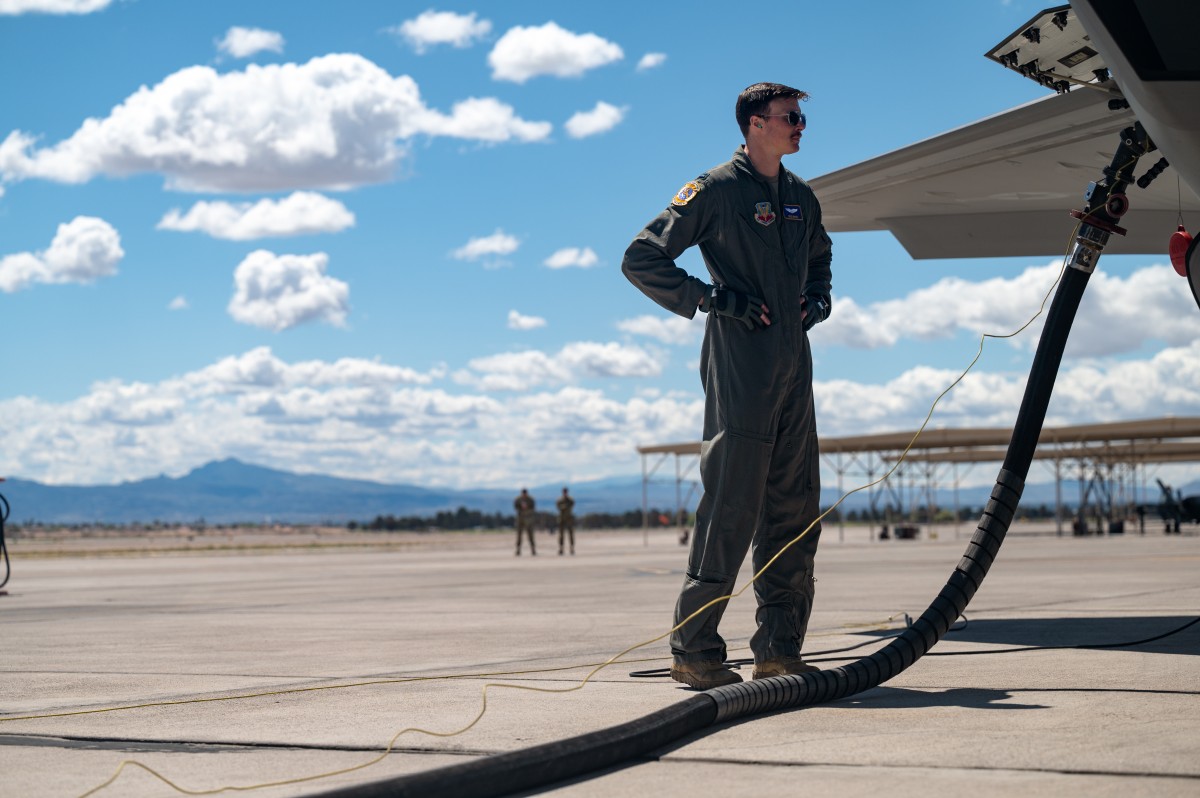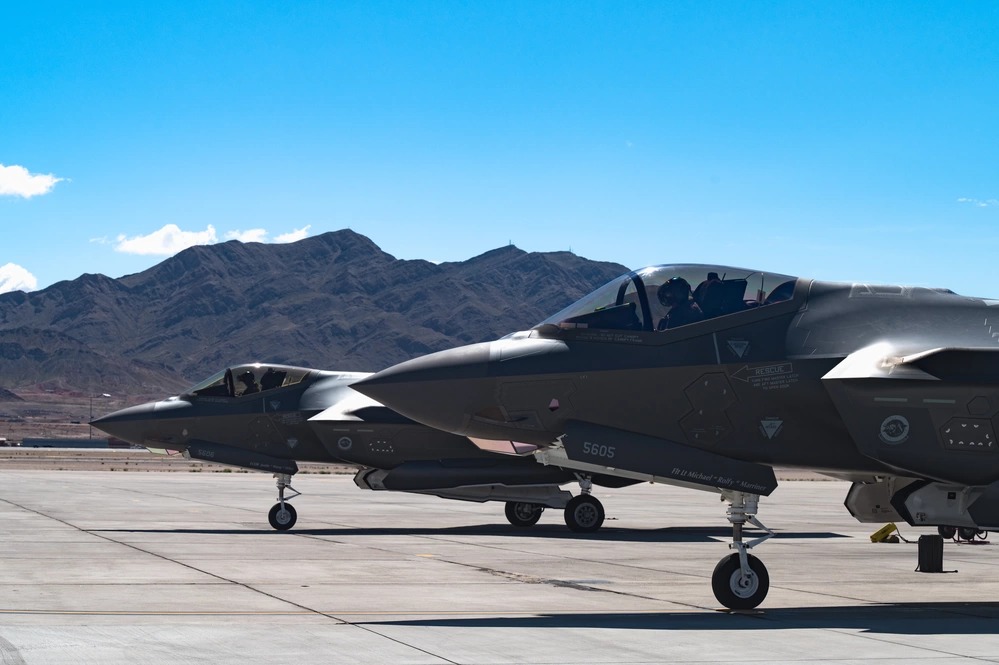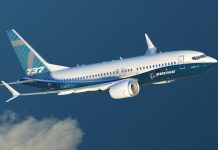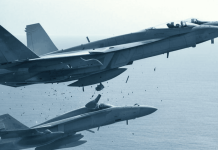The United States Air Force F-35 fighter pilots have engaged in an intensive training program known as Independent Pilot Off-Station Procedures (IPOP) at Nellis Air Force Base (AFB).
On April 1, pilots of the 422nd and 59th Test and Evaluation Squadrons (TES) participated in this initiative, designed to elevate aircrew capabilities in aircraft maintenance and refueling.
The core objective of the IPOP is to equip pilots with the skills necessary to independently inspect and deploy their aircraft, a crucial element to foster self-sufficiency during prolonged flight missions.
The program includes comprehensive training in refueling procedures and post-flight checks on vital components such as tires and intakes.
By equipping pilots with such maintenance and refueling skills, the program extends the F-35’s operational range by enabling deployment from austere or degraded environments with limited support and maintenance personnel.

The exercise provides pilots with hands-on training and serves as a platform for the 59th Test and Evaluation Squadron’s Maintenance Operational Test (MxOT) division to advance standardization efforts in tactics, techniques, and procedure development within a joint environment.
This underscores the Air Force’s efforts to enhance mission readiness and operational effectiveness through rigorous training and collaboration.
Emphasizing resource utilization, the US Air Force released several photos showcasing F-35 fighter pilots performing crucial post-flight checks and preparing for refueling as part of the IPOP training.
The service said that these exercises were conducted in a controlled environment to ensure the safe operation of the F-35 while allowing pilots to develop fundamental maintenance skills.
This development follows closely on the heels of a significant milestone in F-35 fighter aircraft interoperability, as the United States and Royal Norwegian Air Forces recently conducted the first-ever unsupervised F-35 Lightning II cross-service operation.
These cross-servicing agreements allow nations to leverage foreign airfields and maintenance resources, expanding capabilities beyond borders.
Initiatives such as the IPOP and cross-service operations exemplify the F-35 program’s effort to expand global readiness and interoperability.

USAF Preparing For Combat In Contested Environment
The exercise serves as the latest illustration of the US Air Force’s efforts to equip the F-35A for operation in settings where maintenance personnel may not be readily available.
In recent years, the landscape of modern warfare has shifted towards a more dynamic and unpredictable arena, prompting the US Air Force and its allied counterparts to adapt rapidly.
Central to this adaptation is the implementation of the Agile Combat Employment (ACE) doctrine, a strategic framework aimed at increasing operational agility, interoperability, and survivability in contested environments.
As tensions simmer and potential adversaries modernize their military capabilities, the need for flexible and resilient air power becomes paramount.
A cornerstone strategy within ACE is the dispersion of operational capabilities across multiple sites, specifically in the Indo-Pacific theater, as a measure to counterbalance the Chinese military.
This approach not only enhances strategic interoperability among allied air forces but also presents a formidable challenge to adversaries attempting to identify and neutralize high-value targets.

To bolster the survivability of military facilities in the Pacific region, the US Air Force has undertaken a series of complementary investments. Among these initiatives is the pre-positioning of equipment in hardened facilities across its chain of Pacific bases.
This proactive measure, exemplified by the significant redeployment of ordnance to Guam in 2017 amid escalating tension with North Korea, serves to mitigate the vulnerability of key installations to potential disruptions in logistics chains.
A prime example is the Rapid Raptor deployment concept designed for the F-22 Raptor air superiority fighters. This strategy enables units of F-22s to swiftly deploy to forward locations, with accompanying supplies carried in a single transport aircraft.
Despite the F-22’s demanding maintenance requirements, these deployments offer a means to mount a quick response to regional contingencies. Similarly, the Air Force has sought to enhance the adaptability of its F-35 units, which constitute a significant portion of its aerial fleet.
By diversifying operating locations and reducing reliance on large airfields, the US Air Force aims to mitigate vulnerabilities and maintain operational tempo in contested environments.
The adoption of ACE is not limited to the US Air Force alone; it extends to allied forces as well. Meanwhile, the Marine Corps, utilizing the F-35B variant optimized for short takeoff and vertical landing, has also prioritized austere airfield operations.
While this variant may have limitations in endurance and combat performance compared to the Air Force’s F-35A, its versatility in utilizing makeshift runways adds another dimension to the ACE strategy.
In essence, the Agile Combat Employment doctrine represents a paradigm shift in US Air Force operations, driven by the need to adapt to evolving threats and maintain a competitive edge in an era of great power competition.
- Contact the author at ashishmichel(at)gmail.com
- Follow EurAsian Times on Google News




